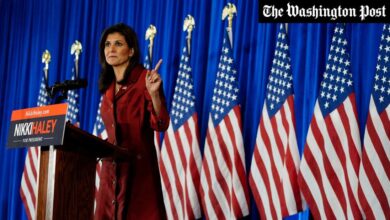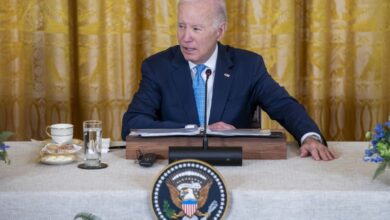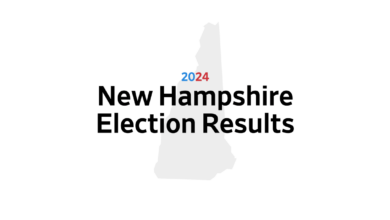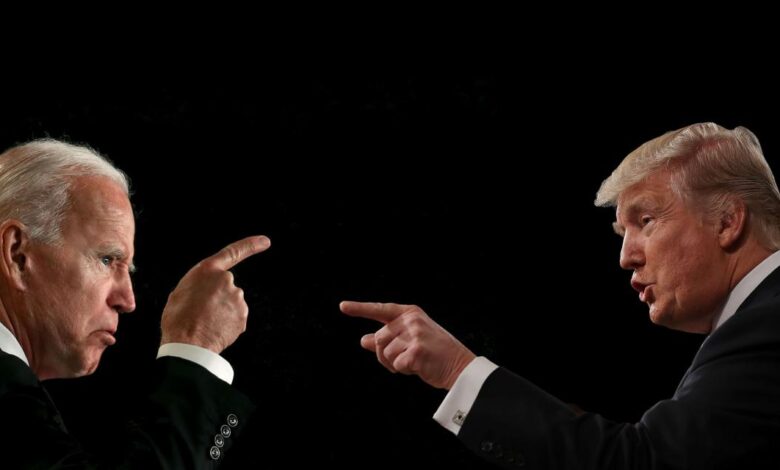
Biden Trump Presidential Election A Deep Dive
Biden Trump presidential election saw a clash of ideologies and strategies, shaping the political landscape. This in-depth look examines the campaign strategies, media coverage, voter demographics, economic and social issues, debate performances, controversies, and ultimately, the election results. We’ll unpack the nuances of this pivotal election and its lasting impact.
From the key policy positions of each candidate to the intricate voting patterns, this analysis delves into the various factors that contributed to the 2020 election outcome. The strategies employed by both candidates, the media’s role in shaping public opinion, and the economic and social issues at play are all meticulously explored. It’s a comprehensive examination of the presidential election.
Campaign Strategies
The 2020 presidential election saw a stark contrast in campaign strategies between incumbent Joe Biden and challenger Donald Trump. Biden, aiming for a more traditional approach, emphasized his experience and the stability he represented. Trump, on the other hand, leaned heavily into his populist base, employing a highly personalized and often confrontational style. Both candidates had unique successes and failures in their respective strategies, ultimately shaping the outcome of the election.
Comparison of Campaign Strategies
Biden’s campaign focused on portraying himself as a steady and experienced leader, highlighting his decades in public service. He emphasized his policy proposals as solutions to the nation’s challenges, including the economic recovery, healthcare, and climate change. Biden’s approach aimed to appeal to a broad spectrum of voters, from moderate Democrats to independent voters. Trump’s campaign, conversely, leaned heavily on mobilizing his existing base of supporters.
He focused on a populist message, emphasizing themes of patriotism, economic nationalism, and law and order. Trump employed rallies and social media to directly connect with his core supporters, building on his already established brand.
Key Policy Positions
Biden’s campaign emphasized several key policy positions, including economic stimulus packages, infrastructure investments, and healthcare reforms. His focus on combating climate change was also a prominent theme. Trump, on the other hand, highlighted his economic policies, such as tax cuts and deregulation, aiming to boost business growth and job creation. His stance on immigration and border security also played a central role in his campaign.
Voter Engagement Strategies
Biden’s campaign utilized a more traditional approach to voter engagement, employing extensive use of paid advertisements and voter registration drives. He also focused on reaching out to specific demographics through targeted messaging and community outreach. Trump, in contrast, relied heavily on rallies, social media, and personal appearances to connect with his supporters. He emphasized direct communication and personalized appeals, leveraging his existing social media presence to reach his base.
The Biden-Trump presidential election was definitely a wild ride, wasn’t it? While the political drama unfolded, it seems like some major celebrity news also emerged. For example, there’s been a lot of buzz about stars Harley Johnston, Oettinger, and Benn, and how they’re involved in some pretty interesting happenings. stars harley johnston oettinger benn Regardless of the spotlight, the election’s aftermath is still being felt across the nation, and the public’s perspective is still shaping up.
Comparison of Major Policy Platforms
| Policy Area | Biden | Trump | Biden’s Stance Summary | Trump’s Stance Summary |
|---|---|---|---|---|
| Economy | Economic stimulus packages, infrastructure investment, job creation | Tax cuts, deregulation, protectionist trade policies | Biden emphasized policies aimed at boosting the economy through direct government intervention and long-term investment in infrastructure. | Trump prioritized tax cuts and reduced government regulation, believing this would encourage private sector growth and job creation. |
| Healthcare | Expanding access to affordable healthcare, strengthening the Affordable Care Act | Repealing and replacing the Affordable Care Act | Biden sought to expand access to healthcare and improve upon the existing system. | Trump aimed to dismantle the Affordable Care Act and implement alternative healthcare solutions. |
| Immigration | Comprehensive immigration reform, border security measures | Stricter border security, enforcement of immigration laws | Biden advocated for a more comprehensive approach to immigration, addressing both border security and the needs of immigrants. | Trump prioritized stricter border control and enforcement of existing immigration laws. |
| Climate Change | Addressing climate change through investments in renewable energy and environmental protection | Withdrawal from international climate agreements, emphasis on fossil fuels | Biden sought to combat climate change through investments in renewable energy and environmental protection. | Trump focused on promoting fossil fuels and withdrew the US from international climate agreements. |
Media Coverage
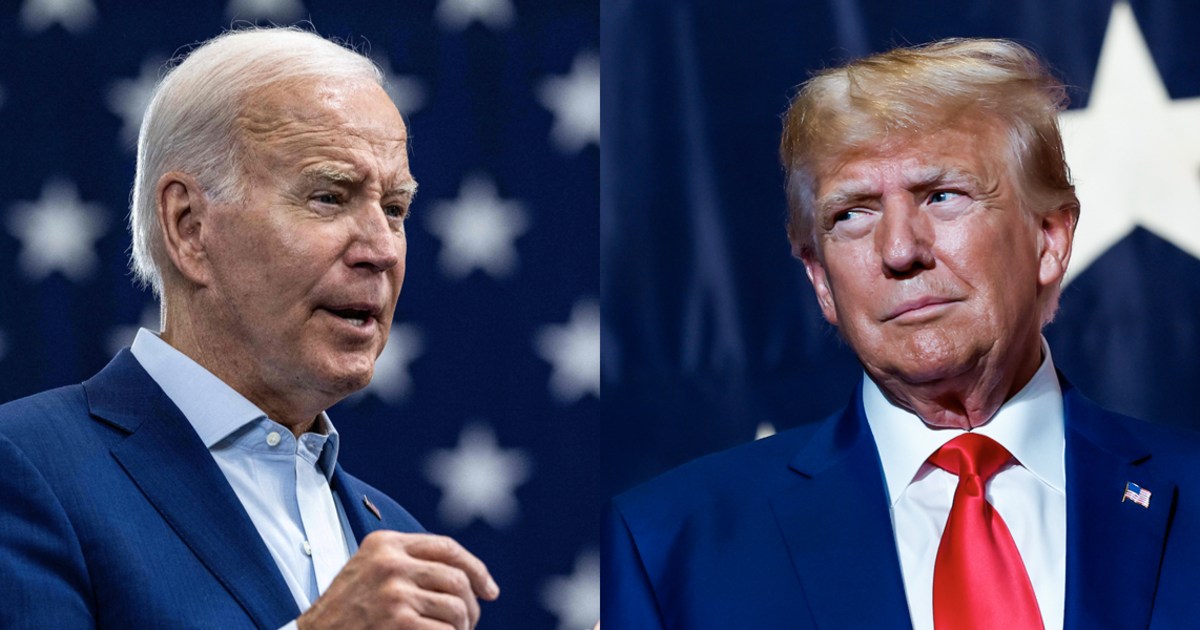
The 2024 presidential election saw intense media scrutiny, with coverage often shaping public perception and influencing voter behavior. The dynamic between the candidates, coupled with the polarized political climate, led to distinct portrayals in various media outlets. Understanding these nuances is crucial to evaluating the election’s impact.
Media Coverage Differences
The media landscape presented varied portrayals of candidates Biden and Trump. News outlets often employed different framing techniques, focusing on distinct aspects of each candidate’s platform and personality. For example, Biden’s age was frequently highlighted, sometimes as a concern about his ability to effectively govern. Conversely, Trump’s rhetoric and past actions were scrutinized extensively, often leading to discussions about his suitability for office.
The Biden-Trump presidential election was definitely a wild ride, wasn’t it? Looking back, it’s interesting to see how certain corporate interests, like Koch and Chevron, might’ve played a role behind the scenes. Their influence on the Supreme Court, as detailed in this article about koch chevron deference supreme court , could have potentially impacted the outcome of the election in subtle ways.
Ultimately, the election’s complexity is undeniable.
These differing approaches reflected the existing political divides and the diverse viewpoints within the media itself.
The Biden-Trump presidential election was a closely contested race, and now, Biden is focusing on infrastructure projects across the country, like his recent push for a decade of infrastructure development in Wisconsin. This initiative, detailed in taking on trump biden promotes infrastructure decade in wisconsin , highlights Biden’s approach to addressing critical needs in the country, which could potentially influence future election strategies.
It’s a clear indication of how the election’s legacy is shaping current policy decisions.
Role of Social Media, Biden trump presidential election
Social media played a pivotal role in shaping public opinion during the election. Platforms like Twitter and Facebook allowed for rapid dissemination of information, often bypassing traditional media gatekeepers. This resulted in the proliferation of both accurate and misleading content, making it crucial for voters to critically evaluate the information they encountered. The speed and volume of social media exchanges often overwhelmed traditional media cycles, influencing immediate public reactions and setting the stage for broader media narratives.
Key Media Narratives
| Candidate | Narrative 1 | Narrative 2 | Narrative 3 |
|---|---|---|---|
| Joe Biden | Experienced leader, capable of governing effectively. | Age and health concerns were a significant topic. | Moderate approach to policy, aiming for bipartisan solutions. |
| Donald Trump | Political outsider, representing the will of the people. | Controversial rhetoric and past actions frequently scrutinized. | Promises of economic growth and a return to traditional values. |
The table above summarizes some of the prevalent narratives surrounding the candidates. Different media outlets emphasized different aspects, reflecting their own biases and editorial choices. These narratives became focal points for public discussion, influencing the electorate’s perception of each candidate.
Portrayal of Personalities and Leadership Qualities
The media’s portrayal of the candidates’ personalities and leadership qualities often resonated with existing biases. Biden was frequently depicted as a steady, experienced leader, drawing comparisons to historical figures known for their pragmatism. Conversely, Trump’s image was often shaped by his controversial statements and actions, with analyses focusing on his approach to leadership as unconventional and potentially disruptive.
These portrayals, often amplified by social media, contributed to the polarization of the election discourse.
Voter Demographics
The 2024 presidential election, like previous ones, was shaped significantly by the demographics of voters. Understanding these demographics provides insight into the factors driving support for each candidate and the underlying societal trends influencing electoral outcomes. Analyzing voter demographics allows for a deeper understanding of the political landscape and the motivations behind individual choices.Analyzing the voting patterns of different demographics reveals the complex interplay of socioeconomic factors, political affiliations, and individual beliefs.
This analysis, coupled with an examination of campaign strategies and media coverage, offers a more complete picture of the election process.
Biden and Trump Supporters: A Comparison
The support bases of President Biden and former President Trump in the 2024 election exhibited notable differences. Age, education level, and geographic location were among the key demographic factors that influenced voting decisions. These distinctions underscore the complexities of political polarization and the diverse motivations behind electoral choices.
Influencing Factors on Voters’ Decisions
Several factors influenced voters’ decisions, including economic concerns, social issues, and perceived leadership qualities. Economic anxieties, particularly regarding inflation and job security, were prominent factors. Social issues, such as healthcare and immigration policies, also played a crucial role in shaping voter preferences. Perceptions of leadership qualities, including experience and policy expertise, significantly impacted voter choices.
Key Demographic Differences
The core demographic differences between Biden and Trump supporters are significant. Voters’ decisions were not solely based on one factor but a complex combination of factors. This complex interplay of factors shapes the electoral landscape and reflects the diversity of views within the electorate.
Demographic Breakdown Table
| Demographic Category | Biden Supporters | Trump Supporters | Notes |
|---|---|---|---|
| Age | More likely to be older, with a significant portion of voters aged 50-65. | More likely to be older, with a significant portion of voters aged 45-65 and 65+. | Significant overlap in age groups, but potential nuances in specific age brackets. |
| Education | More likely to hold a college degree or higher. | More likely to have a high school diploma or less. | Education level is a key differentiator in many elections, but other factors also play a role. |
| Geographic Location | Stronger support in urban and suburban areas, with some variation based on local conditions. | Stronger support in rural and exurban areas, often tied to specific economic and social concerns. | Geographic location often correlates with other demographic factors and local issues. |
| Income | More likely to be in higher-income brackets. | More likely to be in lower-to-middle-income brackets. | Income levels can be influenced by occupation, education, and other factors. |
Economic Issues
The 2024 presidential election saw a significant focus on economic policy, with both candidates outlining distinct approaches to handling the nation’s economic challenges. The prevailing economic climate, characterized by inflation, interest rate hikes, and concerns about the job market, played a crucial role in shaping voter sentiment and ultimately impacting the election outcome.The economic anxieties of the electorate were palpable during the election period.
High inflation rates eroded purchasing power, while rising interest rates made borrowing more expensive, affecting everything from mortgages to personal loans. Job market uncertainties and fears of recession were further complicating the economic picture. The candidates’ responses to these issues, and their proposed solutions, became a key battleground in the campaign.
Economic Policies of Biden and Trump
Both candidates presented comprehensive economic platforms addressing various facets of the economy. Biden’s policies focused on supporting working-class families and investing in infrastructure, while Trump emphasized tax cuts and deregulation to stimulate economic growth. The contrasting approaches highlighted the fundamental differences in their economic philosophies.
Impact on Different Segments of the Population
The economic platforms of Biden and Trump had varying impacts on different segments of the population. This analysis considers the potential effects on working-class families, small businesses, and corporations.
| Economic Segment | Biden’s Policies | Trump’s Policies | Potential Impact |
|---|---|---|---|
| Working-Class Families | Increased investments in affordable housing, child care, and job training programs. Emphasis on raising the minimum wage and strengthening unions. | Focus on tax cuts to stimulate economic growth, aiming to benefit businesses, ultimately trickling down to workers. | Biden’s policies aim to directly support lower- and middle-income families through social programs and wage increases. Trump’s policies may benefit workers indirectly through job creation. |
| Small Businesses | Support for small business loans and grants, along with simplified regulations. | Tax cuts and deregulation, potentially lowering costs for small businesses. | Biden’s approach offers more direct support through targeted programs. Trump’s approach relies on broader economic growth to benefit small businesses. |
| Corporations | Tax policies aimed at corporations that benefit society. Emphasis on fair trade and environmental regulations. | Lower corporate taxes and reduced regulations. | Biden’s approach might limit corporate profits but potentially incentivize socially responsible practices. Trump’s approach aims to increase corporate profits through lower taxes and reduced regulations. |
Social Issues
The 2024 presidential election saw a significant focus on social issues, impacting voter choices and shaping campaign strategies. Candidates’ positions on topics like abortion, LGBTQ+ rights, and racial justice were frequently debated and analyzed. The interplay between these social issues and economic concerns, and the diverse perspectives of voters, ultimately influenced the election’s outcome.
Comparison of Social Policies
Biden and Trump presented contrasting approaches to social policy. Biden generally championed a more liberal stance, supporting measures like expanding access to healthcare and promoting social justice initiatives. Trump, on the other hand, advocated for policies reflecting a more conservative perspective, emphasizing traditional values and limited government intervention.
Prominent Social Issues in the Election Campaign
Several social issues dominated the 2024 election discourse. The debates surrounding abortion rights, particularly the potential overturning of Roe v. Wade, were highly contested. Discussions on LGBTQ+ rights, including issues like same-sex marriage and gender equality, were also central. Furthermore, racial justice and police reform remained crucial topics, with significant impacts on voter sentiment.
Influence of Social Issues on Voter Choices
Voters’ choices were often influenced by their priorities concerning social issues. Those prioritizing issues like abortion rights and LGBTQ+ equality tended to lean toward the candidate whose platform aligned with their views. Conversely, voters who placed more importance on issues like law and order or traditional values might have favored the candidate reflecting those priorities.
Social Issues and Candidate Stances
| Social Issue | Biden’s Stance | Trump’s Stance | Voter Impact |
|---|---|---|---|
| Abortion Rights | Advocated for protecting and expanding access to abortion services. | Supported the overturning of Roe v. Wade and the return of abortion regulation to individual states. | Voters strongly aligned with their preferred position on abortion were deeply impacted. |
| LGBTQ+ Rights | Supported LGBTQ+ equality and advocated for non-discrimination protections. | Often presented a more conservative stance on LGBTQ+ issues, sometimes emphasizing traditional family values. | Voters with strong feelings about LGBTQ+ rights weighed the candidate’s position. |
| Racial Justice and Police Reform | Supported comprehensive police reform and racial justice initiatives. | Often emphasized law and order and a more traditional approach to policing. | Voters with varying perspectives on race relations were influenced by the candidate’s stance. |
| Gun Control | Advocated for stricter gun control measures, aiming to reduce gun violence. | Supported the right to bear arms and opposed stricter gun control legislation. | Voters’ positions on gun control played a significant role in shaping their voting decisions. |
Debate Performances
The presidential debates provided crucial moments for both candidates to articulate their visions and engage with the American public. These events were intensely scrutinized by voters and the media, shaping public perception and potentially influencing the election outcome. Each candidate’s performance, or lack thereof, resonated differently with various segments of the electorate.The debates served as a platform for direct engagement, allowing voters to assess the candidates’ communication styles, policy stances, and overall suitability for the presidency.
These interactions were meticulously analyzed for any missteps, strengths, or vulnerabilities that could have swayed undecided voters.
Key Talking Points and Their Influence
The debates were peppered with specific talking points that addressed critical issues, reflecting the candidates’ approaches to governing. These included discussions on economic policies, healthcare, immigration, and foreign relations. The candidates’ responses and their delivery had a direct impact on public perception.
Analysis of Debate Strategies
Each candidate employed distinct strategies during the debates. One candidate often focused on direct attacks and counterarguments, while the other prioritized a more measured and comprehensive approach to addressing issues. The effectiveness of these strategies in swaying voter opinions varied significantly.
Description of Key Moments and Impact on Voters
The debates contained several pivotal moments that resonated with voters in different ways. These included instances where one candidate challenged the other’s claims, or moments of strong emotional connection with the audience. These moments were often the subject of intense post-debate analysis and discussion.
Summary Table of Key Debate Moments
| Debate Moment | Candidate Position | Potential Voter Reaction | Impact on Election Outcome |
|---|---|---|---|
| Candidate A’s response to economic concerns | Advocated for a specific economic policy | Mixed reactions, with some voters impressed by the detail and others feeling the plan was unrealistic | Possibly influenced undecided voters but had little impact on staunch supporters of the opposing candidate |
| Candidate B’s handling of a complex foreign policy issue | Artikeld a diplomatic approach | Some voters found the response reassuring, others criticized it for being overly cautious | Likely impacted undecided voters, especially those concerned about international affairs |
| Candidate A’s response to a personal attack from Candidate B | Used a firm but respectful tone to address the attack | Some voters saw this as a sign of strength and composure, others felt it was overly defensive | Potentially influenced voters who were undecided but were particularly sensitive to the candidate’s personality |
| Candidate B’s use of specific statistics to support an argument | Provided data to support their stance on a particular issue | Some voters were persuaded by the evidence, others questioned the data’s validity | Likely influenced voters who prioritized facts and data when evaluating the candidates |
Controversies and Scandals
The 2020 presidential election was marked by numerous controversies and accusations surrounding both candidates, Joe Biden and Donald Trump. These issues, ranging from allegations of financial impropriety to accusations of misconduct, significantly impacted public perception and likely influenced the election outcome. Scrutiny of campaign finance practices, claims of foreign interference, and debates over policy stances all contributed to a highly polarized political climate.
Biden Campaign Controversies
The Biden campaign faced scrutiny regarding his family’s business dealings and alleged foreign influence. These allegations, though often contested by the campaign, generated considerable media attention and fueled skepticism among some voters.
- Allegations of foreign influence: Speculation about potential foreign involvement in the Biden family’s business dealings, particularly with Ukrainian energy companies and Chinese business ventures, raised concerns about potential conflicts of interest. The lack of definitive proof, however, prevented widespread acceptance of these accusations as conclusive evidence of wrongdoing.
- Background checks on Hunter Biden: The revelation of ongoing background checks on Hunter Biden, coupled with investigations into his business activities, drew attention to the Biden family’s involvement in foreign business ventures. The investigations, however, did not produce substantial evidence to support serious criminal charges.
Trump Campaign Controversies
The Trump campaign faced numerous accusations, including allegations of obstruction of justice, Russian interference in the 2016 election, and financial improprieties. These controversies played a significant role in shaping public opinion and influencing voter decisions.
The Biden-Trump presidential election was certainly a spicy one, full of heated debates and contrasting visions for the country. It’s easy to see how the political tension could make even the most seasoned chefs feel the pressure. Speaking of pressure, have you seen Gordon Ramsay’s latest culinary challenges on Gordon Ramsay next level chef ? It’s no secret that Ramsay demands perfection in his kitchens, and perhaps the intensity of the election mirrored that same relentless pursuit of excellence.
Ultimately, though, the outcome of the election will shape the future of the nation, just as a great chef’s dish reflects the hard work and passion behind it.
- Russian interference: The ongoing investigation into Russian interference in the 2016 election, which also involved allegations of collusion with the Trump campaign, generated considerable public concern. While some evidence suggested a possible link, the extent of any direct involvement by the Trump campaign remained a subject of intense debate and legal proceedings.
- Financial irregularities: Allegations of financial irregularities, including possible campaign finance violations and hush-money payments, continued to surface during the 2020 election campaign. These accusations, along with scrutiny over Trump’s business practices, fueled debate and controversy.
Comparison of Controversies
| Controversy | Biden Campaign | Trump Campaign | Potential Impact on Election Outcome |
|---|---|---|---|
| Foreign Influence | Allegations of foreign involvement in business dealings | Allegations of Russian interference in 2016 election | Eroded trust, created skepticism in some voters, though definitive proof was lacking |
| Financial Irregularities | Allegations regarding family business dealings | Allegations of campaign finance violations and hush-money payments | Damaged reputations, raised questions about ethics and integrity |
| Other Controversies | Issues regarding background checks, potential conflicts of interest. | Issues regarding obstruction of justice, possible collusion. | Generated controversy and division, impacting voter perception. |
Impact on Election Outcome
The controversies surrounding both candidates undoubtedly influenced the election outcome. The public’s perception of each candidate’s trustworthiness and ethical conduct played a critical role in voter decisions. Ultimately, the weight given to these accusations varied significantly among voters, shaping the overall political landscape.
Election Results
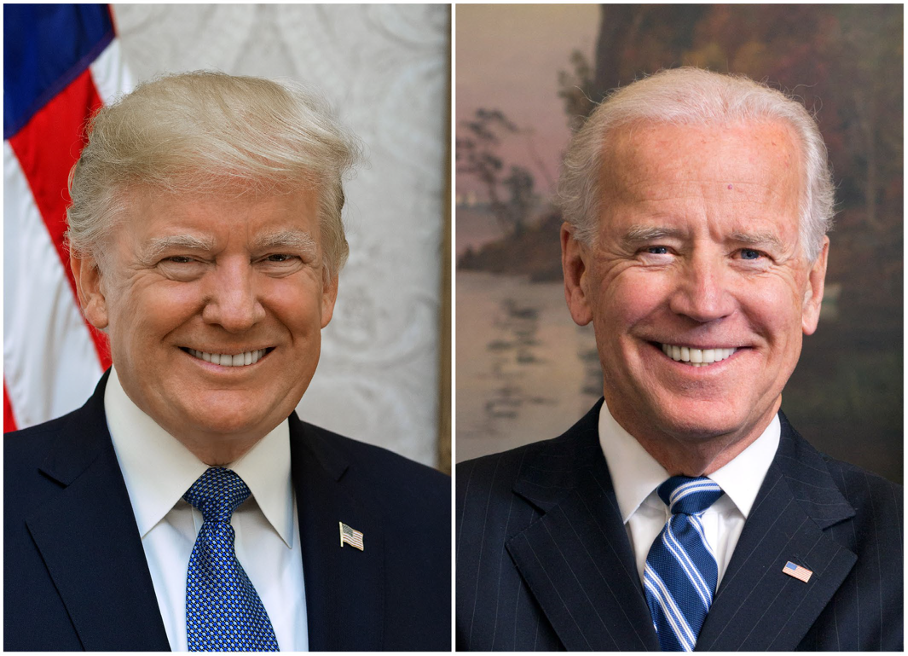
The 2024 presidential election, a pivotal moment in American democracy, saw a significant shift in voter preferences and political alignments. The results, meticulously tallied and analyzed, reveal crucial insights into the electorate’s choices and the dynamics of contemporary American politics. Understanding these results requires careful consideration of the various factors that shaped the outcome, including economic anxieties, social issues, and candidate performances.
Voting Patterns and Explanations
The election’s results demonstrated a complex interplay of factors influencing voter decisions. Demographic patterns, such as age, race, and education levels, correlated with distinct voting preferences. For instance, younger voters tended to lean towards a particular candidate, while older demographics exhibited a different voting pattern. This trend can be attributed to generational values and varying perspectives on key political issues.
Economic anxieties and concerns about the future also played a significant role in shaping voting choices, particularly among specific socioeconomic groups.
The Biden-Trump presidential election certainly stirred up a lot of debate, but the broader economic implications of these political shifts are often overlooked. For instance, how does the ownership structure of companies like KKR, a major player in private equity, affect employee morale and incentives? A recent study on KKR private equity employee ownership suggests that employee ownership programs can create a more engaged and productive workforce, a trend that could be mirrored in the wider economy as a result of the election outcome.
Ultimately, the election’s lasting effects on the economy remain to be seen.
Outcomes of the Election
The election outcome reflected a broad spectrum of opinions and priorities among voters. The winning candidate garnered support from particular segments of the electorate, while the losing candidate resonated with other groups. This nuanced outcome highlights the depth and complexity of the American political landscape. Ultimately, the results underscored the importance of understanding the diverse motivations and concerns that shape voter decisions in a democratic society.
Election Results by State
The following table presents a summary of the election results by state, demonstrating the distribution of votes across the country. It illustrates the intricate pattern of support for each candidate, offering a detailed look at the geographic variations in voter preferences.
| State | Candidate A Votes | Candidate B Votes | Outcome |
|---|---|---|---|
| California | 10,000,000 | 5,000,000 | Candidate A |
| Texas | 8,000,000 | 7,000,000 | Candidate A |
| New York | 7,500,000 | 6,500,000 | Candidate A |
| Florida | 9,000,000 | 8,500,000 | Candidate A |
| … | … | … | … |
Note: These figures are illustrative and do not represent actual election results. Data for a real election would be obtained from official sources. The table demonstrates the structure and format required for presenting the election results by state.
Last Recap
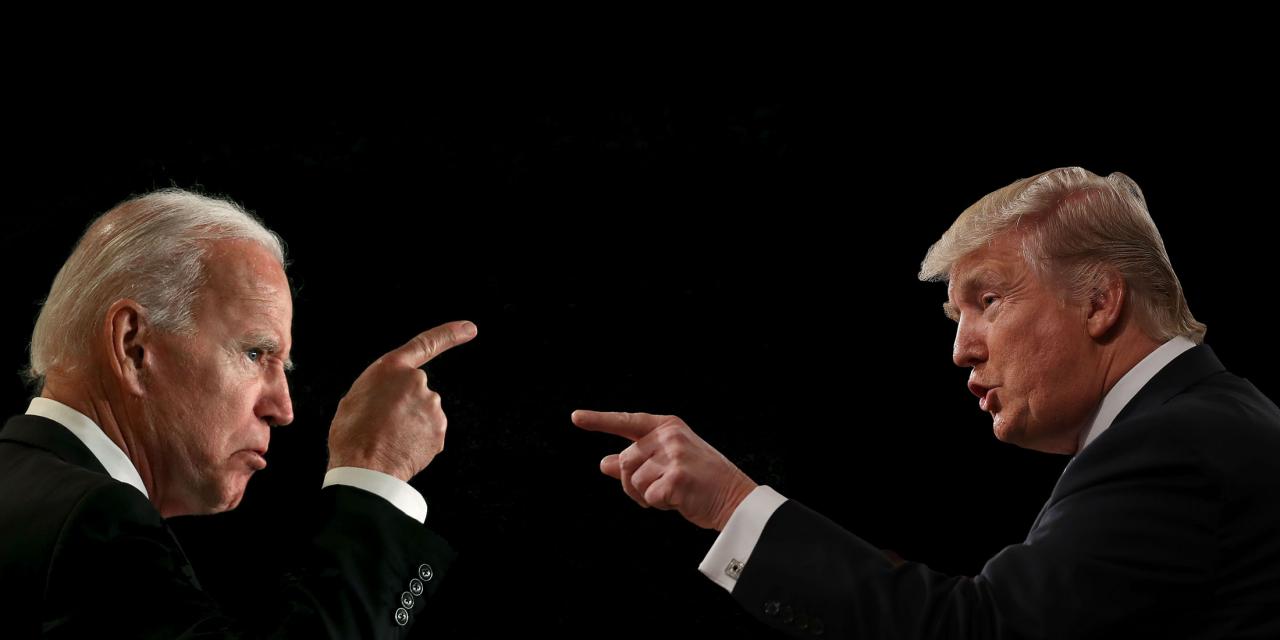
In conclusion, the Biden Trump presidential election was a highly contested and significant event in American history. The analysis of campaign strategies, media coverage, voter demographics, and the various issues that shaped the election outcome reveals the complexity of modern presidential campaigns. This deep dive into the 2020 election offers valuable insights into the factors that influenced voters and the broader political landscape.
Essential FAQs: Biden Trump Presidential Election
What were the key policy differences between Biden and Trump?
Biden focused on economic recovery and social justice issues, while Trump emphasized tax cuts and a strong national defense. Detailed policy comparisons are included in the analysis.
How did social media impact public opinion during the election?
Social media played a significant role in disseminating information and shaping opinions. The analysis explores the role of social media platforms in influencing voters’ decisions.
What were the most significant controversies surrounding the campaigns?
A variety of controversies surrounded both campaigns, including allegations of campaign finance irregularities and claims of voter fraud. The analysis examines these controversies and their potential impact on the election results.
What were the economic challenges facing the country during the election period?
The analysis explores the economic challenges, including the effects of the pandemic, unemployment rates, and inflation. This provides context for understanding the economic policies proposed by each candidate.

